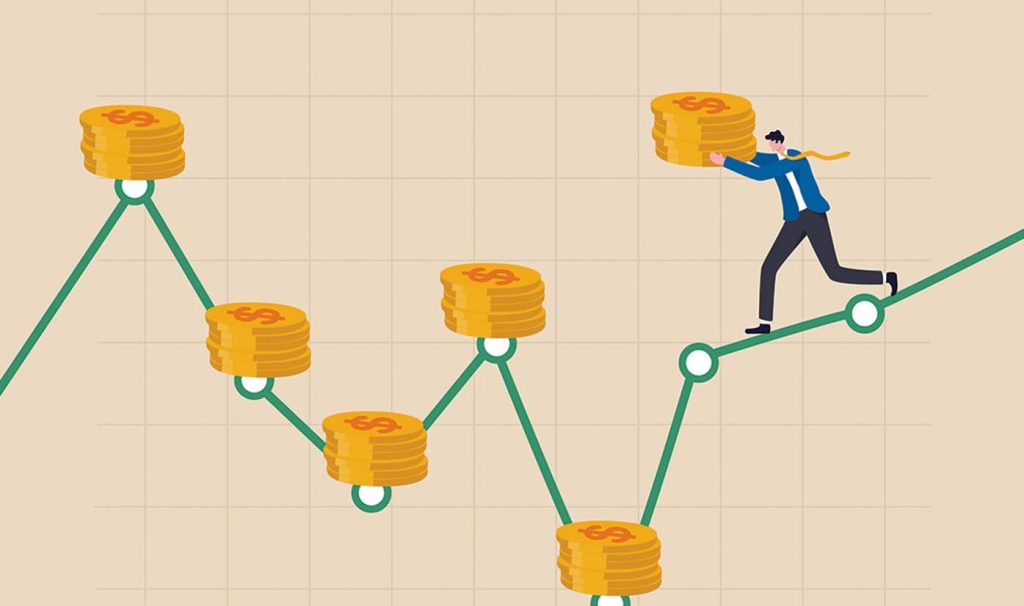How to Plan Your Money Moves When the World Feels Wobbly
When the economy is shaky—markets swinging, inflation climbing, layoffs looming, and the news full of buzzwords like “recession” and “bear market”—even the most confident investors can find themselves curled up with a spreadsheet and a stress headache. But here’s the good news: economic uncertainty doesn’t mean financial paralysis. In fact, it’s one of the best times to reassess your goals, refine your strategy, and come out stronger on the other side.
Whether you’re navigating a turbulent economy or just trying to make sense of your money amidst chaos, setting clear financial goals is like grabbing a compass in the fog. Let’s break down how to do it—with a little bit of strategy, a dose of realism, and a touch of optimism.
🧭 Why Setting Goals During Uncertainty Matters More Than Ever
In good times, financial goal setting feels empowering. In uncertain times, it’s essential. Here’s why:
- It helps you stay grounded. When headlines are screaming and markets are bleeding, having a plan gives you clarity.
- It prevents emotional decisions. Goals create a filter to block out noise and keep you from panic-selling or hoarding cash out of fear.
- It keeps your future intact. Economic cycles are inevitable. Your long-term plans shouldn’t vanish just because the Dow dropped 600 points.
👥 Who Needs to Focus on This Now?
Honestly? Everyone. But especially:
- Young professionals worried about job security or struggling to save
- Families trying to balance rising costs with long-term goals like college funds or homeownership
- Entrepreneurs facing market contractions or supply chain hiccups
- Pre-retirees rethinking timelines after portfolio hits
- Gig workers/freelancers with variable income and fewer safety nets
Each group has unique needs—but the process of setting smart, adaptable goals is universal.
🎯 Step-by-Step: How to Set Financial Goals in an Uncertain Economy
1. Assess Your Current Situation (Honestly)
Before you plan for the future, get clear on the present.
- What are your fixed and variable expenses?
- How secure is your income?
- What debts are weighing on you?
- How much do you have in savings or investments?
Don’t sugarcoat. Clarity > comfort.
2. Prioritize with a “Needs-First” Framework
Start with survival, then thrive.
- Tier 1: Safety goals – Emergency fund, debt payments, rent/mortgage
- Tier 2: Stability goals – Retirement savings, insurance coverage, family needs
- Tier 3: Growth goals – Investing, buying property, launching a business
Economic downturns are no time for aimless ambition. Focus on what matters most—then layer up.
3. Break Big Goals into Bite-Sized Milestones
Instead of saying “I want to save $20,000,” say:
“I’ll save $385 a month for the next 12 months.”
This creates achievable mini-goals and a dopamine reward cycle when you hit them—even in tough times.
4. Reevaluate Your Timeline
Economic uncertainty might slow things down. That’s okay.
Pushing retirement back two years or pausing a home purchase doesn’t mean failure—it means flexibility. Be ready to pivot.
📦 Choosing Investment Products (Yes, Even Now)
Contrary to popular belief, investing during volatility isn’t reckless—it’s wise if done right. Here’s how:
🛡️ 1. Emergency Fund First
Before any investments, prioritize 3–6 months of living expenses in a high-yield savings account (like Ally, Marcus, or Capital One 360). This is your financial parachute.
📊 2. Diversified Index Funds
Broad-market ETFs like:
- VTI (Vanguard Total Stock Market ETF)
- VOO (Vanguard S&P 500 ETF)
- SCHD (Schwab U.S. Dividend Equity ETF)
They spread your risk and offer growth even in shaky economies.
🧓 3. IRA or Roth IRA
Max these out if you can. They’re tax-advantaged and can soften future blows. Roth IRAs are especially useful if your income drops temporarily.

💼 4. Dollar-Cost Averaging (DCA)
Invest small, regular amounts—regardless of market conditions. This reduces timing risk and builds discipline.
5. Defensive Stocks or Sectors
During uncertainty, companies that sell necessities—like food, healthcare, and utilities—often hold their value better. Think:
- JNJ (Johnson & Johnson)
- PG (Procter & Gamble)
- DUK (Duke Energy)
💡 Pro Tips for Financial Goal-Setting in Tough Times
- Automate your savings and investing. Remove emotion from the process.
- Track progress monthly. A simple spreadsheet can show how far you’ve come.
- Use budgeting apps like YNAB, Mint, or Monarch to keep everything visible.
- Keep cash in T-bills or high-yield accounts to outpace inflation slightly.
- Avoid high-risk bets unless you truly understand them. This isn’t the time to “YOLO” your stimulus check into crypto derivatives.
🧠 The Psychology Side: Keep Calm and Plan On
Economic stress can cloud judgment. Here’s how to stay sane:
- Zoom out. Look at your goals in 5-, 10-, 20-year horizons.
- Talk to a financial advisor—or at least a money-savvy friend.
- Practice gratitude. Seriously. It rewires your brain to see abundance, not just fear.
🌱 Recommendations for Different Life Stages
🧒 Young Adults (18–30):
- Build a 3-month emergency fund
- Start investing early—even $50/month counts
- Use Roth IRAs to your advantage
- Learn financial literacy via podcasts/books (recommendation: “The Psychology of Money” by Morgan Housel)
👨👩👧 Families (30–50):
- Build 6-month emergency savings
- Focus on insurance (health, life, disability)
- Balance long-term (college, retirement) with near-term (debt, childcare)
- Use 529 plans and 401(k) match benefits
🧓 Near-Retirees (50+):
- Shift toward safer assets like bonds or dividend stocks
- Revisit retirement date and withdrawal strategy
- Consider downsizing or simplifying expenses
- Explore annuities only with trusted advisors
🌱 Recommendations for Different Life Stages
🧒 Young Adults (18–30):
- Build a 3-month emergency fund
- Start investing early—even $50/month counts
- Use Roth IRAs to your advantage
- Learn financial literacy via podcasts/books (recommendation: “The Psychology of Money” by Morgan Housel)
👨👩👧 Families (30–50):
- Build 6-month emergency savings
- Focus on insurance (health, life, disability)
- Balance long-term (college, retirement) with near-term (debt, childcare)
- Use 529 plans and 401(k) match benefits
🧓 Near-Retirees (50+):
- Shift toward safer assets like bonds or dividend stocks
- Revisit retirement date and withdrawal strategy
- Consider downsizing or simplifying expenses
- Explore annuities only with trusted advisors

🏁 Be the Calm in the Storm
Economic uncertainty is scary—but it’s not new. Recessions, bubbles, inflation, wars, pandemics… history is full of volatility. And yet, people still retire, buy homes, build wealth, and chase dreams.
The difference? They set goals, stuck with them, and adjusted when needed.
So whether you’re saving your first $1,000 or planning how to retire by 55, the key is clarity, resilience, and intentionality. Don’t let chaos dictate your financial story—use it as motivation to write a better one.
